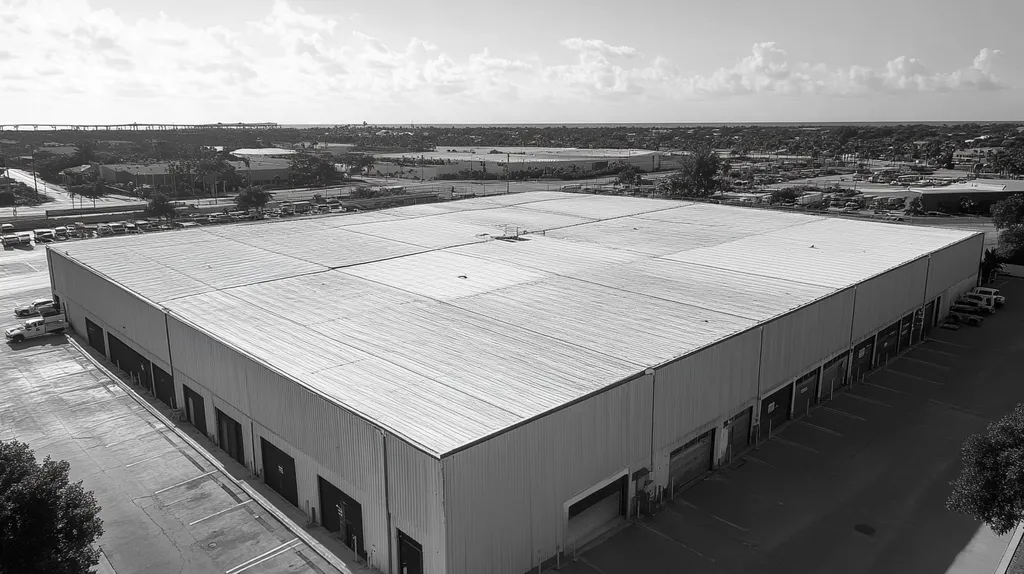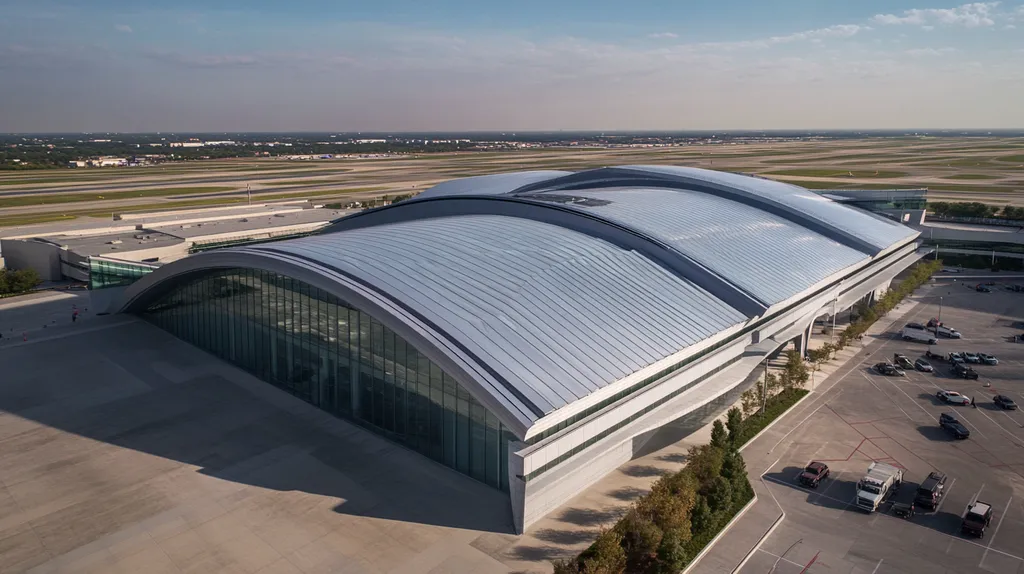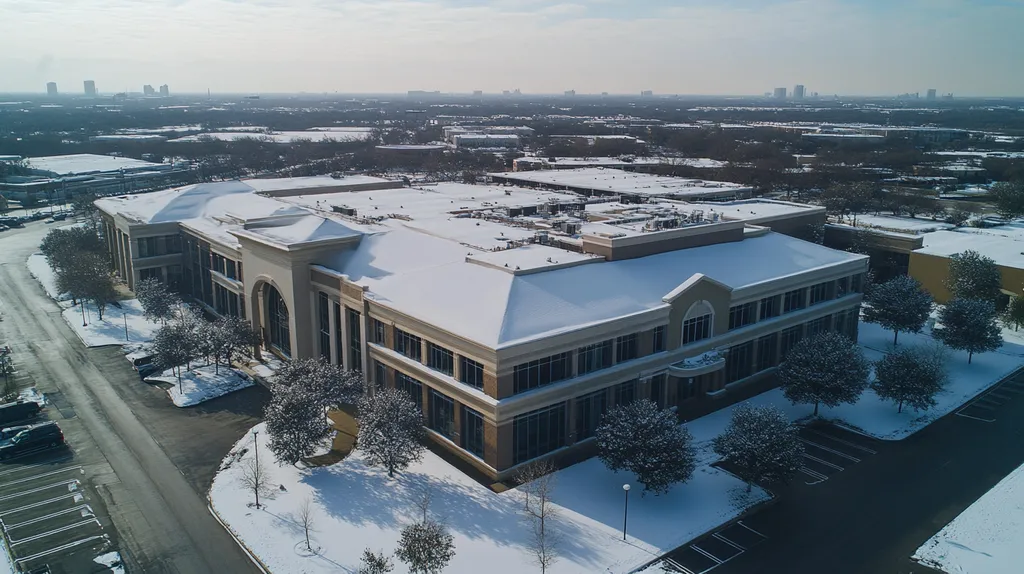Welcome to today’s Battle Royale featuring two roofing heavyweights: “Reflective Roof Coatings” in the east corner versus “Energy-Saving Membranes” in the west!
Tonight’s showdown pits these contenders against each other across six punishing rounds designed to test every aspect of their performance for Commercial Roof Energy Efficiency.
At stake? Millions in potential costs, decades of building protection, and the critical performance demands of modern commercial and industrial facilities.
Our professional judging panel will evaluate each round on technical merit, real-world performance, and value delivery. After all six rounds, we’ll declare our ultimate champion.
Ladies and gentlemen, facility managers and building owners… it’s time to rumble!
ROUND 1: INITIAL COSTS & INSTALLATION
In today’s climate of rising energy costs and environmental concerns, choosing the right commercial roofing solution has become a make-or-break decision. With utility bills consuming an ever-larger portion of operating budgets, facility managers must carefully weigh the initial investment against long-term energy savings. The choice between reflective roof coatings and energy-saving membranes represents a critical financial and operational decision that impacts both immediate costs and future performance.
Material Expenses
The difference in material costs between these two options can be substantial. Reflective roof coatings typically range from $0.50 to $3.00 per square foot for materials, making them an attractive option for budget-conscious property managers.
Energy-saving membranes command higher prices, usually between $4.00 and $8.00 per square foot, due to their advanced manufacturing processes and specialized materials. However, these materials often include integrated insulation and durability features that coatings cannot match.
While membrane systems offer superior durability and built-in features, the significant cost difference makes reflective coatings more accessible for immediate implementation. For pure material cost considerations, the clear “ADVANTAGE” goes to reflective roof coatings.
Installation Complexity
Reflective coatings offer straightforward application methods that many roofing crews can handle efficiently. The process typically involves cleaning the existing roof surface and applying the coating with standard equipment, requiring minimal specialized training.
Energy-saving membranes demand more technical expertise and precise installation techniques. The process includes careful seam welding, proper overlap measurements, and detailed attention to flashing details – all requiring specialized training and equipment.
Since installation complexity directly affects labor costs and project risk, the simpler application process of reflective coatings provides a clear benefit. This subsection’s “ADVANTAGE” belongs to reflective roof coatings.
Project Timeline
Time equals money in commercial roofing projects, and reflective coatings shine in this category. Most coating applications can be completed in days, with minimal disruption to building operations and quick cure times.
Energy-saving membrane installations typically require more extensive preparation and longer installation periods. The process often involves removing existing roofing materials, installing new insulation layers, and carefully securing the membrane system.
Weather sensitivity and cure times also favor coating applications, as they generally have more flexible installation windows. For timeline efficiency and minimal business disruption, the “ADVANTAGE” goes to reflective roof coatings.
ROUND 1 WINNER: Reflective Roof Coatings
ROUND 2: DURABILITY & LIFESPAN
When a commercial roof fails prematurely, the consequences ripple through every aspect of building operations. Not only does failure compromise energy efficiency, but it also leads to increased maintenance costs, potential interior damage, and disrupted business operations. Understanding how different roofing solutions perform over time is crucial for making sound investment decisions that protect both your building and your bottom line.
Weather Resistance
Weather resistance directly impacts how well a roofing system maintains its energy-efficient properties over time. Extreme temperatures, UV exposure, and precipitation can all degrade roofing materials, reducing their effectiveness and increasing energy costs.
Reflective coatings excel in UV protection but can become compromised by repeated freeze-thaw cycles. While they effectively reflect sunlight when new, their performance can diminish over time as the coating weathers and potentially develops weak spots.
Energy-saving membranes typically demonstrate superior resistance to all weather conditions. Their multi-layer construction and welded seams create a more robust barrier against diverse weather challenges, maintaining consistent performance through seasonal changes.
For overall weather resistance, the ADVANTAGE goes to energy-saving membranes.
Physical Durability
The ability to withstand physical stress from foot traffic, equipment maintenance, and debris impact significantly affects a roof’s longevity. A compromised roof surface quickly loses its energy-efficient properties.
Reflective coatings provide good surface protection but can be vulnerable to scratching and punctures. Even minor damage can create weak points that compromise the coating’s reflective properties and protective capabilities.
Energy-saving membranes offer superior resistance to physical damage through their thick, multi-layer construction. Their robust design better handles routine maintenance traffic and accidental impacts without losing effectiveness.
In terms of physical durability, the ADVANTAGE clearly belongs to energy-saving membranes.
Long-Term Performance
The true test of any roofing solution lies in its ability to maintain energy efficiency over years of service. Initial performance means little if it cannot be sustained throughout the expected service life.
Reflective coatings typically require reapplication every 5-10 years to maintain optimal performance. While this allows for fresh coating application, it also means more frequent maintenance intervals and associated costs.
Energy-saving membranes generally maintain their performance characteristics for 15-20 years with minimal intervention. Their integrated approach to energy efficiency proves more stable over time, requiring less frequent maintenance to maintain effectiveness.
For long-term performance stability, the ADVANTAGE goes to energy-saving membranes.
ROUND 2 WINNER: Energy-Saving Membranes
ROUND 3: PERFORMANCE FACTORS
In today’s era of skyrocketing energy costs, the performance of commercial roofing systems can make or break a building’s operational budget. With cooling costs representing up to 15% of a building’s energy consumption, choosing between reflective coatings and energy-saving membranes becomes a critical decision that impacts both immediate comfort and long-term operating costs.
Solar Reflectance
Solar reflectance represents how effectively a roofing surface bounces back the sun’s rays, directly impacting cooling costs and indoor comfort. Cool roof coatings can reflect more sunlight and absorb less heat compared to traditional roofing materials, making them particularly effective in warm climates. (source: Preferred Roofing Services)
Reflective coatings excel in this category, with many products achieving reflectance ratings above 80%. Their specialized formulations create a highly reflective surface that dramatically reduces heat absorption into the building structure.
Energy-saving membranes typically offer good reflectance properties but may not match the peak performance of dedicated reflective coatings. However, they compensate through additional insulation properties and more consistent performance over time.
For pure solar reflectance capabilities, the “ADVANTAGE” goes to reflective roof coatings.
Energy Transfer Resistance
The ability to resist heat transfer through the roof assembly plays a crucial role in maintaining stable indoor temperatures. This factor becomes especially important during extreme weather conditions when heating or cooling systems work hardest.
Reflective coatings primarily work by reflecting solar radiation but offer limited resistance to conducted heat transfer. Their thin application provides minimal insulation value compared to more substantial roofing systems.
Energy-saving membranes incorporate multiple layers and often include built-in insulation components. This comprehensive approach creates a more effective barrier against all forms of heat transfer, not just solar radiation.
For overall energy transfer resistance, the clear “ADVANTAGE” belongs to energy-saving membranes.
Year-Round Performance
Consistent performance across all seasons determines the true value of an energy-efficient roofing solution. This becomes particularly important in regions that experience both hot summers and cold winters.
Reflective coatings show their greatest benefits during cooling seasons but offer limited advantages during heating periods. Their effectiveness can also vary significantly based on cleanliness and weather conditions.
Energy-saving membranes maintain more consistent performance throughout the year. Their multi-layer construction helps regulate temperature transfer regardless of season, providing benefits during both heating and cooling periods.
For year-round performance consistency, the “ADVANTAGE” goes to energy-saving membranes.
ROUND 3 WINNER: Energy-Saving Membranes
ROUND 4: MAINTENANCE REQUIREMENTS
Every year, commercial building owners lose millions in energy costs due to poorly maintained roofing systems. What starts as minor maintenance oversights can quickly escalate into major efficiency losses and expensive repairs. For facility managers juggling tight budgets and demanding schedules, understanding the maintenance requirements of different roofing solutions isn’t just about upkeep – it’s about protecting their bottom line.
Regular Inspection Requirements
Regular inspections serve as an early warning system, identifying potential issues before they compromise energy efficiency. The frequency and complexity of these inspections directly impact both maintenance budgets and staff resources.
Reflective coatings typically require quarterly visual inspections and annual performance checks. These inspections focus primarily on surface condition, looking for areas of wear or damage that could compromise reflective properties.
Energy-saving membranes demand more thorough inspections, including seam integrity checks and moisture detection surveys. These detailed examinations often require specialized equipment and trained personnel to properly evaluate system condition.
For inspection simplicity and lower specialist requirements, the “ADVANTAGE” goes to reflective roof coatings.
Cleaning and Surface Maintenance
Surface cleanliness directly affects energy efficiency performance. Dirt, debris, and biological growth can significantly reduce a roof’s ability to reflect solar radiation and regulate temperature.
Reflective coatings need regular cleaning to maintain optimal performance, but the process is straightforward. Standard pressure washing and gentle cleaners can typically restore reflective properties without risking damage to the coating.
Energy-saving membranes require more careful cleaning protocols to avoid damaging seams or protective layers. Their textured surfaces can trap more debris and may need more frequent cleaning to maintain performance.
For ease of cleaning and maintenance simplicity, the “ADVANTAGE” belongs to reflective roof coatings.
Repair and Restoration
When damage occurs, the complexity and cost of repairs significantly impact long-term maintenance strategies. The ease of restoration directly affects both maintenance budgets and building operation disruptions.
Reflective coatings offer simple spot repair options and can be easily recoated when needed. Local damage can be addressed without compromising the entire system’s integrity.
Energy-saving membranes often require more complex repair procedures, especially around seams and penetrations. Even minor repairs may need professional intervention to maintain system warranties and performance.
For repair simplicity and restoration flexibility, the “ADVANTAGE” goes to reflective roof coatings.
ROUND 4 WINNER: Reflective Roof Coatings
ROUND 5: SUSTAINABILITY CREDENTIALS
In an era where environmental regulations are tightening and energy costs continue to climb, sustainable roofing choices have become a critical business imperative. Nearly 40% of building energy loss occurs through the roof, making sustainability credentials a key factor in roofing decisions. Modern facility managers must balance immediate operational needs with increasing pressure to reduce their building’s environmental impact.
Life Cycle Impact
Life cycle assessment evaluates a roofing system’s environmental impact from manufacturing through disposal. This comprehensive view helps facility managers understand the true environmental cost of their roofing choices.
Reflective roof coatings typically have a lower environmental impact during production due to their simpler manufacturing process. They can also extend the life of existing roofing systems by 10-15 years, significantly reducing landfill waste and replacement material needs.
Energy-saving membranes require more intensive manufacturing processes and raw materials. However, their superior durability and longer lifespan can offset some of these initial environmental impacts through reduced replacement frequency.
For overall environmental impact throughout the product lifecycle, the ADVANTAGE goes to reflective roof coatings.
Resource Efficiency
Resource efficiency measures how effectively a roofing solution minimizes material waste and maximizes energy conservation. This metric has become increasingly important as materials costs rise and disposal options become more limited.
Reflective coatings excel in material efficiency, requiring minimal raw materials and generating less waste during installation. Their ability to be applied over existing roofing systems prevents unnecessary tear-offs and associated landfill waste.
Energy-saving membranes typically require complete removal of existing materials and generate more installation waste. While they offer excellent long-term energy efficiency, their resource-intensive installation process creates a larger initial environmental footprint.
For resource efficiency and waste reduction, the ADVANTAGE belongs to reflective roof coatings.
Environmental Certification Support
Modern buildings increasingly pursue environmental certifications like LEED and Energy Star. The right roofing choice can contribute significant points toward these certifications while supporting corporate sustainability goals.
Reflective coatings directly support multiple certification credits through their solar reflectance and urban heat island reduction properties. Their low-impact installation process and minimal material requirements align well with green building standards.
Energy-saving membranes contribute to certification requirements through their thermal performance and durability. However, their more resource-intensive installation process and end-of-life disposal challenges can limit their contribution to certain certification credits.
For environmental certification support, the ADVANTAGE goes to reflective roof coatings.
ROUND 5 WINNER: Reflective Roof Coatings
ROUND 6: SPECIALIZED APPLICATIONS
In specialized commercial environments, choosing the wrong roofing solution can lead to catastrophic energy waste and premature system failure. From urban heat islands to extreme weather zones, different building environments create unique challenges that demand specific performance characteristics. Understanding how various roofing technologies perform in these specialized applications can mean the difference between optimal efficiency and costly failures.
Urban Environments
Dense urban environments present unique challenges for commercial roofing systems. Heat island effects, air pollution, and restricted maintenance access combine to create demanding conditions that test the limits of roofing performance.
Reflective roof coatings excel in urban settings by directly addressing heat island concerns. Their high solar reflectance properties significantly reduce rooftop temperatures, providing immediate cooling benefits and reducing HVAC load in congested city environments.
Energy-saving membranes offer good urban performance but may not match the peak cooling benefits of reflective coatings. While they provide excellent insulation, their reflective properties can be less effective at combating intense urban heat buildup.
For overall urban environment performance, the “ADVANTAGE” goes to reflective roof coatings.
Extreme Climate Resilience
Buildings in regions with severe weather patterns require roofing solutions that maintain energy efficiency while withstanding environmental extremes. Temperature swings, heavy precipitation, and high winds create compound stresses that can rapidly degrade roofing performance.
Reflective coatings can struggle in extreme conditions, showing accelerated wear from freeze-thaw cycles and intense storm exposure. Their effectiveness often diminishes more quickly when subjected to harsh weather patterns.
Energy-saving membranes demonstrate superior resilience in extreme climates through their multi-layer construction and robust material composition. Their integrated approach to insulation and weather protection maintains consistent performance even under severe conditions.
For extreme climate applications, the “ADVANTAGE” belongs to energy-saving membranes.
Specialized Industrial Applications
Industrial facilities present unique challenges including chemical exposure, excessive heat generation, and heavy maintenance traffic. These demanding environments require roofing solutions that balance energy efficiency with exceptional durability.
Reflective coatings often prove inadequate for industrial applications due to their vulnerability to chemical damage and mechanical wear. While they provide good initial energy benefits, their performance can rapidly deteriorate under industrial conditions.
Energy-saving membranes offer superior resistance to industrial challenges through their robust construction and specialized material formulations. Their durability and consistent performance make them better suited for maintaining long-term energy efficiency in industrial settings.
For specialized industrial applications, the “ADVANTAGE” goes to energy-saving membranes.
ROUND 6 WINNER: Energy-Saving Membranes
AND THE WINNER IS…
After six grueling rounds of technical evaluation, the judges’ scorecards are in! With an electrifying 4-2 split decision, ENERGY-SAVING MEMBRANES claim the championship belt!
This heavyweight contender dominated the crucial categories of durability, performance, and specialized applications. Its superior weather resistance, consistent year-round performance, and exceptional resilience in extreme conditions proved decisive in securing the victory.
But don’t count out REFLECTIVE ROOF COATINGS! This scrappy challenger showed impressive prowess in cost-effectiveness, maintenance simplicity, and sustainability credentials. For buildings in urban environments where heat island effects reign supreme, or when budget constraints are paramount, reflective coatings remain a formidable choice.
Remember, folks – every building brings its own unique requirements to the ring. Local climate conditions, property characteristics, and specific operational demands can all shift the balance. While tonight’s match provides valuable insights, it’s essential to consult with qualified roofing professionals who can evaluate your specific situation before making your final decision.
In the high-stakes arena of commercial roofing, there’s no universal champion. The real victory comes from matching your building’s specific challenges with the right contender’s strengths. Choose wisely – your building’s energy efficiency championship depends on it!
FREQUENTLY ASKED QUESTIONS
Q. What are the initial costs of a commercial roof coating?
A. Reflective roof coatings are generally more affordable, costing between $0.50 and $3.00 per square foot. In contrast, energy-saving membranes can run from $4.00 to $8.00 per square foot, making coatings a budget-friendly option for many facilities.
Q. How do the durability and lifespan of commercial roofs compare?
A. While reflective coatings offer good initial protection, they may need reapplication every 5-10 years. Energy-saving membranes, however, typically maintain their integrity for 15-20 years, providing superior long-term durability.
Q. What is the impact on energy costs with a commercial roof?
A. The type of roofing system you choose can significantly affect energy bills. Reflective coatings excel in reducing cooling costs while energy-saving membranes provide comprehensive insulation, leading to potential savings in both heating and cooling expenses.
Q. What maintenance do commercial roof coatings require?
A. Reflective coatings typically require quarterly inspections to check for wear and annual performance assessments. They also benefit from regular cleaning to maintain their efficiency, making them relatively easy to maintain.
Q. How do sustainability features differ between roofs?
A. Reflective roof coatings generally have a lower environmental impact due to simpler production processes. They often contribute positively to LEED certifications, while energy-saving membranes can have a larger footprint despite offering long-term benefits.
Q. Are there specific applications for industrial roofs?
A. Yes, in industrial environments, energy-saving membranes are better suited due to their durability against harsh conditions and chemical exposure. Reflective coatings may not withstand the stresses typical in these specialized applications.
Q. Which option is best for urban environments?
A. Reflective roof coatings excel in urban settings by mitigating heat island effects, reducing rooftop temperatures, and enhancing cooling efficiencies, making them a preferred choice for commercial roofs in cities.










